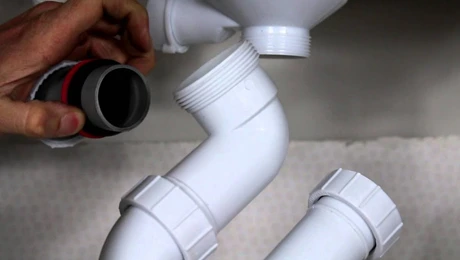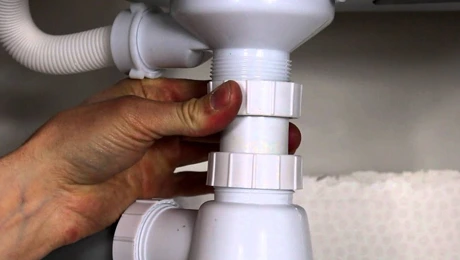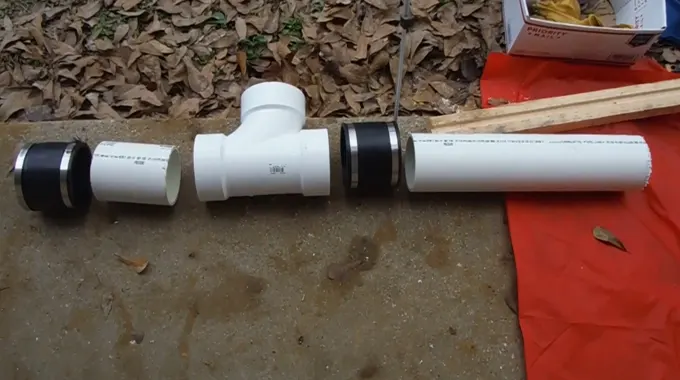Last Updated on January 21, 2023
If you are a DIY enthusiast, you might choose to install PVC piping in your home. However, when it comes time to connect the pipe to cast-iron connections (which is often the plumbing case), it can be challenging and frustrating.
We will describe to you how to connect PVC to cast iron in this article. It’s a simple process that anyone can do with just a few tools and materials.
How to Connect PVC to Cast Iron: Step-By-Step Guide?

Before we get started, let’s take a look at the tools and materials you’ll need:
- PVC Pipe
- Cast Iron Pipe
- PVC Primer
- PVC Cement
- Hack Saw
- Tape Measure
- Pencil
Now that you have gathered the necessary tools and materials, let’s get started with the process:
1. Take Accurate Measurements:
The first step is to take accurate measurements of the pipes you need to connect. This is important because you need to make sure that the PVC pipe fits snugly into the cast-iron pipe. Use a tape measure and write down the measurements.
2. Cut the PVC Pipe:
Once you have the measurements, use a hacksaw to cut the PVC pipe. Make sure that the cut is clean and straight.
3. Deburr the Edge of the Pipe:
After cutting the pipe, you need to remove any sharp edges or burrs on the edge of the pipe. This can be done with a file or a deburring tool.
4. Apply PVC Primer:
The next step is to apply PVC primer to the outside of the PVC pipe and the inside of the cast-iron pipe. This will help to create a strong bond between the two materials.
5. Apply PVC Cement:
After applying the primer, you need to apply PVC cement to both the PVC pipe and the cast-iron pipe. This will help to create a watertight seal between the two pipes.
6. Connect the PVC Pipe to the Cast Iron Pipe:
Once you have applied the cement, you can now connect the PVC pipe to the cast-iron pipe. Make sure that the connection is snug and tight.
7. Allow the Cement to Dry:
After connecting the pipes, you need to allow the cement to dry for a few hours. This will help to create a solid and durable connection between the two pipes.
There you have it! Now you know how to connect PVC to cast iron. This is a simple process that anyone can do with just a few tools and materials.
What Are the Benefits of Using PVC Pipes In Your Home?

There are many benefits of using PVC pipes in your home. Some of these benefits include:
1. PVC Pipes Are More Durable:
PVC pipes are more durable than other types of pipes, such as metal or clay pipes. This is because PVC pipes are made from a solid and sturdy material. They can withstand high temperatures and pressures, making them ideal for use in your home.
2. Easy to Install:
Another benefit of using PVC pipes is that they are easy to install. You don’t need to hire a professional to install them for you. You can easily do it yourself with just a few tools and materials.
3. Cost-Effective:
PVC pipes are also cost-effective. They are less expensive than other pipes, such as metal or clay pipes. This makes them a great choice for use in your home.
4. Versatile:
PVC pipes are also versatile. They can be used for a variety of applications, such as drainage, plumbing, and more. This makes them a great choice for use in your home.
5. Environmentally Friendly:
PVC pipes are also environmentally friendly. They are made from recyclable material, making them an excellent choice for your home.
Tips for Installing PVC piping

Here are a few tips to help you install PVC piping in your home:
- Make sure that the pipes are the correct size. This is important because you don’t want the pipes to be too small or too big.
- Use PVC primer and cement to create a solid and durable connection between the pipes.
- Allow the cement to dry for a few hours before using the pipes.
- Follow the manufacturer’s instructions carefully. This is important because you want to make sure that you’re using the pipes correctly.
- Hire a professional if you’re not sure how to install the pipes. This is important because you don’t want to damage the pipes or your home.
PVC pipes are a great choice for use in your home. They are durable, easy to install, and cost-effective. Follow these tips to ensure that you install the pipes correctly.
FAQ’s
Is PVC Toxic When Heated?
PVC is not toxic when heated. However, it can release harmful chemicals when it is burned. This is why it is important to avoid burning PVC.
Can PVC Be Glued Together?
Yes, PVC can be glued together. However, it is important to use the correct type of glue. Otherwise, the connection may not be strong or durable.
What is the Difference Between PVC and CPVC?
A major distinction between CPVC and PVC is the range of temperatures in which each of both materials can withstand. The temperature limit for CPVC is 200° Fahrenheit, while the limit for PVC is 140° Fahrenheit.
Conclusion
PVC pipes are a great choice for use in your home. They are durable, easy to install, and cost-effective. Follow our tips to ensure that you install the pipes correctly. Additionally, PVC pipes are environmentally friendly and can be used for a variety of applications. Thanks for reading.




